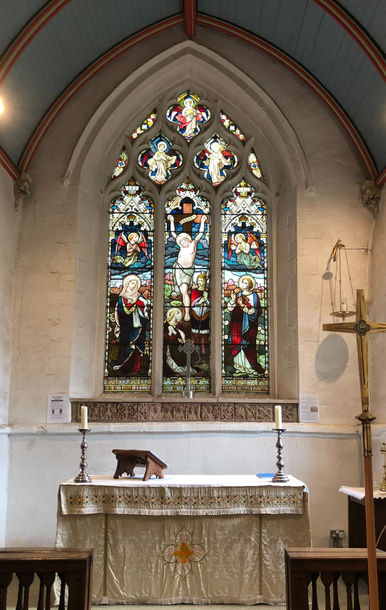ENDED

Welcome to our Church

St Margaret's Church, Fletton
The church was mentioned in the Domesday Book of AD1086 and some of the fabric undoubtedly dates from this time. The belief is that the original church comprised no more than the present chancel and, unusually, what is now the vestry on its north side, with a possibility that the vestry was originally two-storied with a priest’s room on an upper floor.
In 1165 the nave and north aisle were added. This aisle extended along the chancel as well as the nave producing the five-bay arcade that is seen on the north side. The chancel arch has scalloped capitals similar to those of the aisle; and although the arch has since been changed to a gothic pointed profile those capitals strongly support the idea that the arch and the nave were part of the 1165 changes and not parts of the original Norman church. Externally, there is evidence of the Norman period in aan undecorated corbel table and in Norman buttresses at the east end.
The south aisle (which extends only along the nave) was added in 1300. The arches are high and wide and supported by thin pillars, contrasting greatly with the Norman solidity of the north aisle. The tower with a broach spire (which has endured three lightning strikes in the last 100 years!) was added at the same time.
Victorian restoration was carried out in 1872. The present porch dates from that time, replacing the c14 one that had collapsed. The east window was restored and the north aisle was widened.
At the turn of the twentieth century an extension was added on the north side. This was funded by public subscription and by J. C. Hill, owner of the London Brick Company.
More recently a meeting room, toilet and kitchen have been incorporated into the fabric of the church. These have been a welcome addition to the life of the church.
Above the altar and below the east window is a frieze of Anglo-Saxon stone carvings which are dated to the early 9th century. These were previously displayed outside on the south wall of the Chancel, but were repositioned inside after an arson attack in 1983. Also in the chancel are two stone carvings, one is St Michael and the other is still unidentified, both believed to be Anglo-Saxon and probably used on altars within an Anglo Saxon church on the site.
Perhaps our most famous incumbent was the Rev Peter Peckard,1718-1797, a prominent abolitionist and Master of Magdelene College, Cambridge who have an annual memorial prize in his honour. His campaigning, with others, led to the ending of the Atlantic slave trade in 1807 following the passing of the Slave Trade Act, the first of many pieces of legislation, culminating in the Slavery Abolition Act of 1833. The Rev Peckard was buried in Peterborough Cathedral.
Today St Margaret’s is a welcoming church, providing a sanctuary for prayer
We hold a Sunday Service every Sunday at 9:30am. All Welcome
